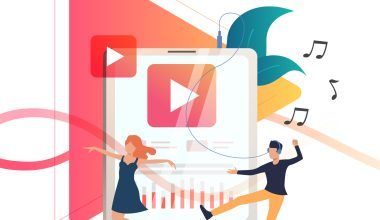In the modern music landscape, streaming services like Apple Music have redefined how artists and creators earn revenue. This blog provides a comprehensive overview of how Apple Music pays songwriters and composers, exploring the intricacies of the payment process, the various revenue streams involved, and the factors influencing earnings. For those interested in the financial aspects of music streaming, understanding these mechanisms is essential.
How Apple Music Pays Songwriters and Composers: An Overview
Apple Music compensates songwriters and composers through a well-structured system designed to ensure fair payment. Unlike traditional physical sales, streaming revenue is divided among several stakeholders, including artists, labels, and songwriters. The payout structure for how Apple Music pays songwriters and composers involves several components, including mechanical royalties, performance royalties, and other revenue sources.
Revenue Sources for Songwriters and Composers
How Apple Music pays songwriters and composers encompasses various revenue streams:
- Mechanical Royalties: These are earned whenever a song is reproduced, whether through digital downloads or streaming.
- Performance Royalties: These are collected when a song is publicly performed, including digital streaming.
- Sync Licenses: While not directly related to streaming, sync licenses for using music in visual media can significantly boost earnings.
Each revenue stream plays a crucial role in how Apple Music compensates songwriters and composers, providing multiple avenues for earning from their work.
Mechanical Royalties: The Foundation of Payment
Mechanical royalties are a fundamental component of how Apple Music pays songwriters and composers. These royalties are generated each time a song is streamed, forming a primary source of income for songwriters. The rate for mechanical royalties is often determined by statutory laws or negotiated rates between music publishers and streaming services. This payment is typically handled by music publishers who then distribute the earnings to the songwriters.
Performance Royalties: Compensation for Public Play
Performance royalties are another critical aspect of how Apple Music pays songwriters and composers. These royalties are collected by Performance Rights Organizations (PROs) like ASCAP, BMI, and SESAC in the United States, and PRS for Music in the UK. These organizations ensure that songwriters and composers are compensated for the public performance of their music, including streams on platforms like Apple Music.
The Role of Music Publishers in Royalty Distribution
Music publishers are pivotal in how Apple Music pays songwriters and composers. They manage the rights to songs, negotiate licenses, and ensure that royalties are correctly collected and distributed. Publishers may negotiate with Apple Music on behalf of songwriters to secure favorable terms and ensure that the correct royalties are paid. They play a crucial role in maximizing the earnings of songwriters and composers.
Detailed Distribution of Revenue
The revenue distribution process in how Apple Music pays songwriters and composers is multifaceted. Apple Music generates revenue through user subscriptions and advertisements. This total revenue pool is then divided among the content owners, including songwriters and composers, based on the share of total streams their music receives. This process involves several layers, including digital distributors and collection agencies, each taking a cut before the final payout reaches the creators.
Factors Influencing Earnings for Songwriters and Composers
Several factors influence how Apple Music pays songwriters and composers:
- Geographical Distribution: Different countries have varying royalty rates and payment structures, affecting earnings.
- Subscription Type: Revenue from premium subscriptions generally yields higher payouts compared to ad-supported or free trial accounts.
- Market Share and Popularity: Songs that dominate the streaming market receive a more significant share of the revenue, highlighting the importance of popularity and market presence.
The Royalty Calculation Process
The calculation of royalties in how Apple Music pays songwriters and composers involves several steps:
- Total Revenue Calculation: Determine the total revenue generated from subscriptions and ads.
- Total Streams Assessment: Calculate the total number of streams for all songs on the platform.
- Stream Share Determination: Determine the percentage of total streams attributed to each song.
- Payout Rate Application: Apply the agreed payout rate to the calculated share of streams.
This calculation ensures that songwriters and composers are compensated based on the actual performance of their songs on the platform.
Understanding Payout Timelines
The payout timelines are usually quarterly, but this can vary depending on the agreements with PROs and publishers. Timely and accurate reporting of streams is crucial for ensuring that songwriters and composers receive their due payments. Delays in reporting or errors in data can significantly impact the timing and accuracy of royalty payments.
Challenges in Royalty Distribution
There are several challenges in it. One major challenge is the accuracy of data reporting. Misreporting or errors in metadata can lead to unpaid or incorrectly paid royalties. Additionally, the global nature of streaming services means that songwriters must navigate a complex web of international laws and regulations, which can complicate the royalty collection process.
Future Trends in Royalty Payments
The future of how Apple Music pays songwriters and composers is likely to be influenced by technological advancements and changes in industry practices. One significant trend is the potential use of blockchain technology to streamline royalty payments, providing greater transparency and efficiency. Additionally, as the music industry continues to evolve, new revenue streams, such as virtual concerts and merchandise sales, may become more integrated with digital music platforms.
Conclusion
In conclusion, how Apple Music pays songwriters and composers is a complex but essential aspect of the music industry. Understanding the various components of the payment system, including mechanical and performance royalties, the role of music publishers, and the factors influencing earnings, is crucial for creators. As the industry continues to evolve, staying informed about these changes will help songwriters and composers maximize their earnings and navigate the financial landscape of digital music.
For further reading, explore these related articles:
- Introduction to Apple Music Subscription
- Understanding and Using the Apple Music Royalty Calculator: A Comprehensive Guide
- The Role of Music Videos on Apple Music
For additional resources on music marketing and distribution, visit Deliver My Tune.






